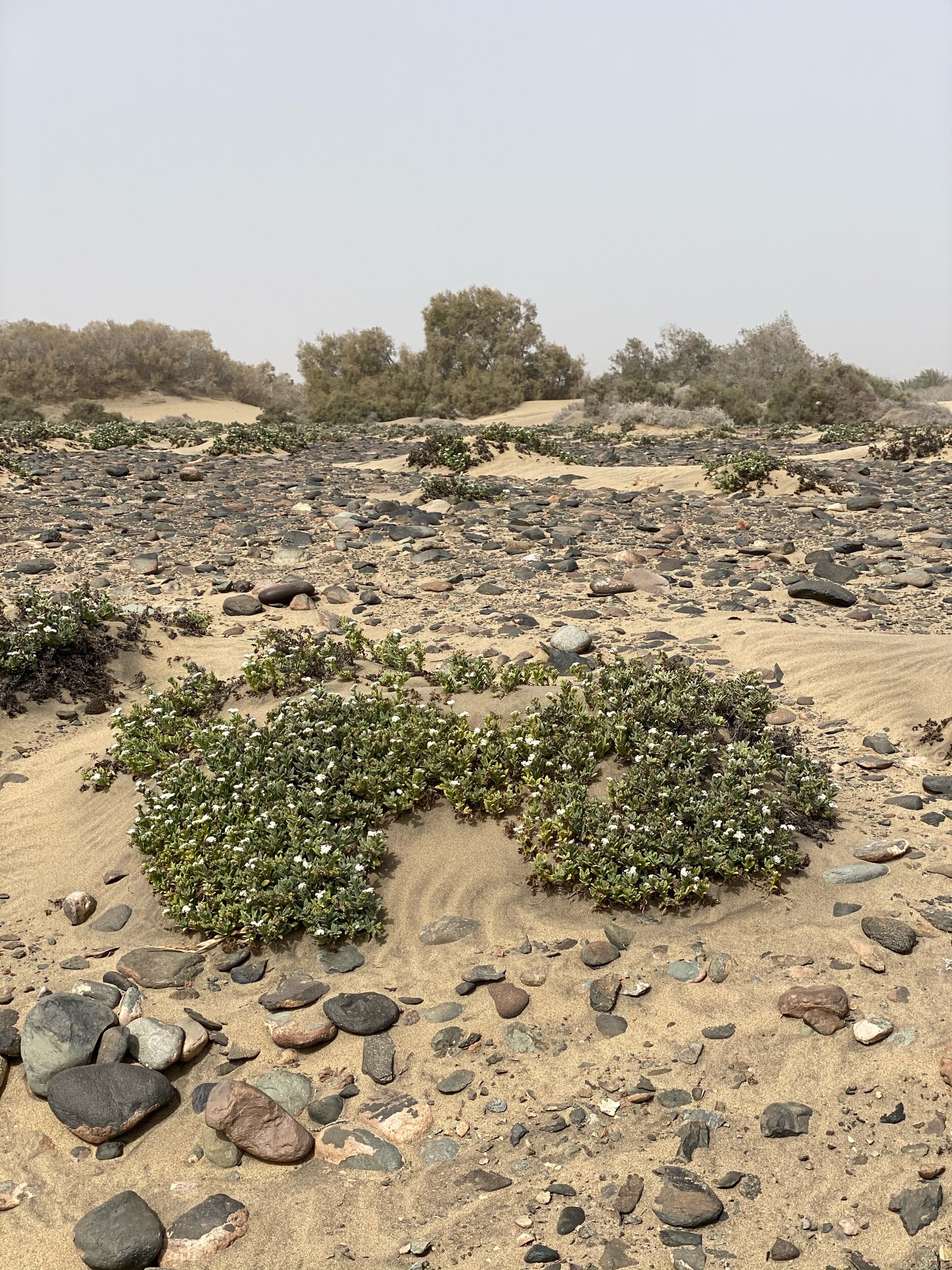Gran Canaria: Maspalomas Sand Dunes
I made a trek to the south of island to see the famous Maspalomas Sand Dunes. My walk through the dunes goes on my list of “very unique experiences” unlike anything else I’ve done. I literally felt like I was in a movie, walking across the Sahara Desert, with nothing but sand and dunes in every direction. Even though there is an entire ocean nearby, I could not see it when in the middle of the dune fields. I felt like a kid, running up and down the mountains of moving sand as it slipped away under my feet with each step I took. Truly…this was so much fun!
The Maspalomas Dunes Special Natural Reserve is an immense expanse of sand which is continuously sculpted by the wind. The dunes stretch along a 6km (3.72 mi) beach from Playa de Maspalomas and its lighthouse where I started my walk and ending at Playa del Inglés. The dunes are constantly changing, growing, and shrinking at the whim of the wind that continuously whips in from the sea.
From my research, this dune system on Gran Canaria was formed hundreds of years ago by the settling of materials from the neighboring Fataga, Ayagaures and Chamoriscán ravines, along with shell remnants washed up by the sea over the centuries. The resulting mounds of sand were later colonized by plants which in turn created the dunes. They are a living system that reaches maturity at 15 to 20 meters (66ft) tall and at around 200 meters (656ft) wide. Scientists have discovered that the total surface of the dune field experiences periods of growth and shrinkage. At this moment, the dunes seem to be getting bigger.
The Maspalomas Lighthouse (Faro de Maspalomas) is the distinctive landmark of the area and has been active since the 19th century. It’s a symbol of the south of the island and has been a Monument of Cultural Interest since 2005, the only historical monument in the area. The first proposal to build a lighthouse in the area was in 1861 as part of a larger project that included the Puerto de la Luz in Las Palmas. The lighthouse was considered essential to navigating the archipelago, facilitating maritime progress on the island and supporting routes between Europe and America.




























